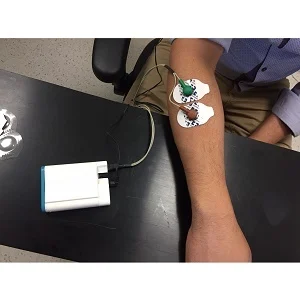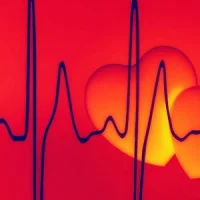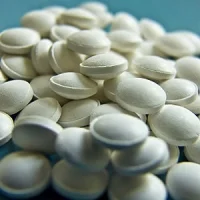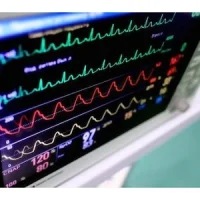Neuroscientists at Newcastle University, UK have developed a small wearable device that can help stroke patients to recover movement and control of their hand permanently.
Recovering after a stroke is a difficult task as the brain must relearn skills it lost when it was damaged. On a positive note, the brain is resilient and has the capability of adapting after such an event. A study published at the Journal of Neuroscience shows that recovery of hand movement and control after a stroke is more possible than previously thought. Although techniques to strengthen brain connections have been documented before, until now this required large laboratory equipment. It is now possible to achieve this with a miniaturised device that can be worn by patients for several hours a day while they perform their daily activities. Moreover, the current study is “the first demonstration that the long-latency stretch reflex can be modified by repeated, precisely timed pairing of stimuli known to activate brainstem pathways”.
The report by Foysal and colleagues describes the successful induction of plasticity using a portable device that is capable of delivering the required stimuli, in the form of small electrical shocks followed by an audible click, to strengthen brain and spinal connections. This solution is particularly important for patients that have lost the major pathway connecting the brain to the spinal cord. Previous research by the research team in primates has shown that this major pathway can be activated and has thus led to research in humans.
Reflex responses in flexor muscles were recorded in healthy subjects following extension perturbations at the elbow. Participants were then fitted with a portable device and the following four paradigms were tested, namely biceps stimulus 10 ms before audible click, click 25 ms before biceps, click alone, and biceps alone. Subjects left the laboratory wearing the device and performed normal daily activities. Stretch reflexes were remeasured seven hours later. The results demonstrated that wearing the device for seven hours strengthened the connections in the reticulospinal tract, one of the signal pathways between the brain and spinal cord, in 15 out of 25 participants.
The findings of the present study open up possibilities for basic research into underexplored pathways important for motor control in healthy individuals. They may also contribute to the enhancement of rehabilitation in stroke and spinal cord injury patients. The carefully controlled clinical trial is just starting at the Institute of Neurosciences, Kolkata, India, in collaboration with Newcastle University, and the results are expected at the end of this year.
Source :The Journal of Neuroscience
References:
K. M. Riashad Foysal, F. de Carvalho and S.N. Baker (2016) Spike Timing-Dependent Plasticity in the Long-Latency Stretch Reflex Following Paired Stimulation from a Wearable Electronic Device, J Neurosci; DOI: http://dx.doi.org/10.1523/JNEUROSCI.1414-16.2016










